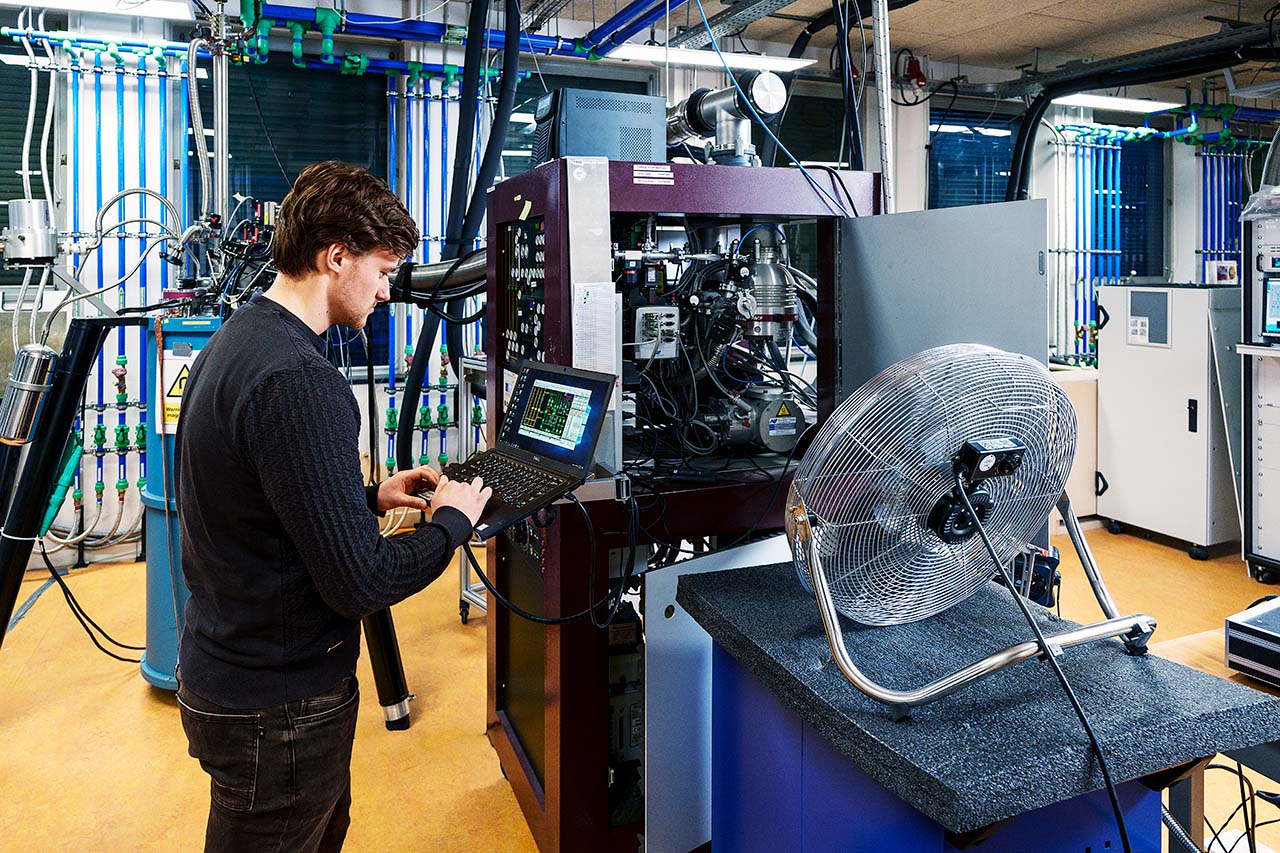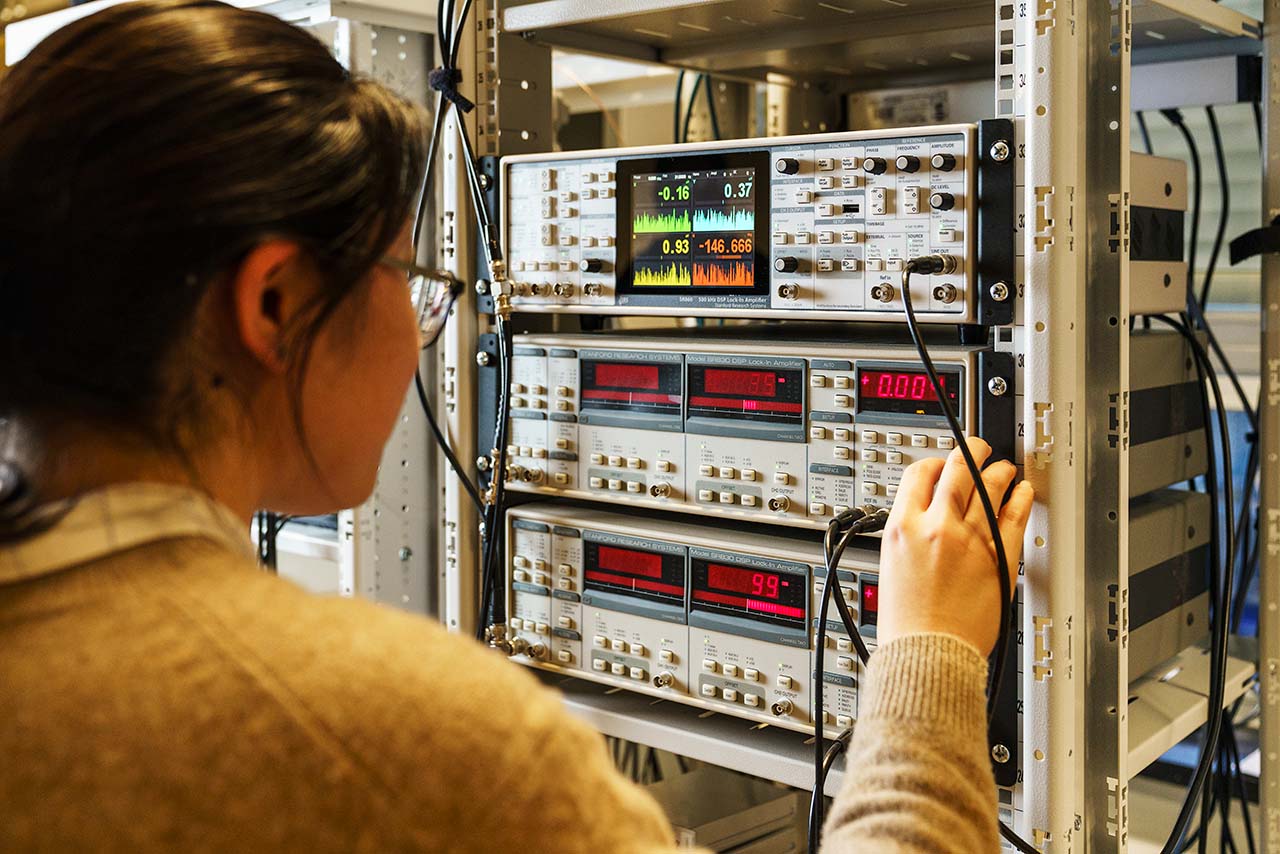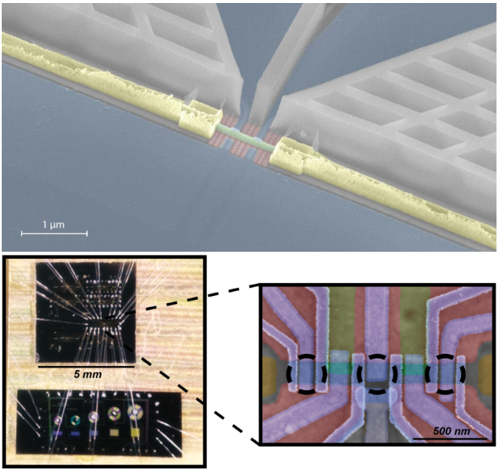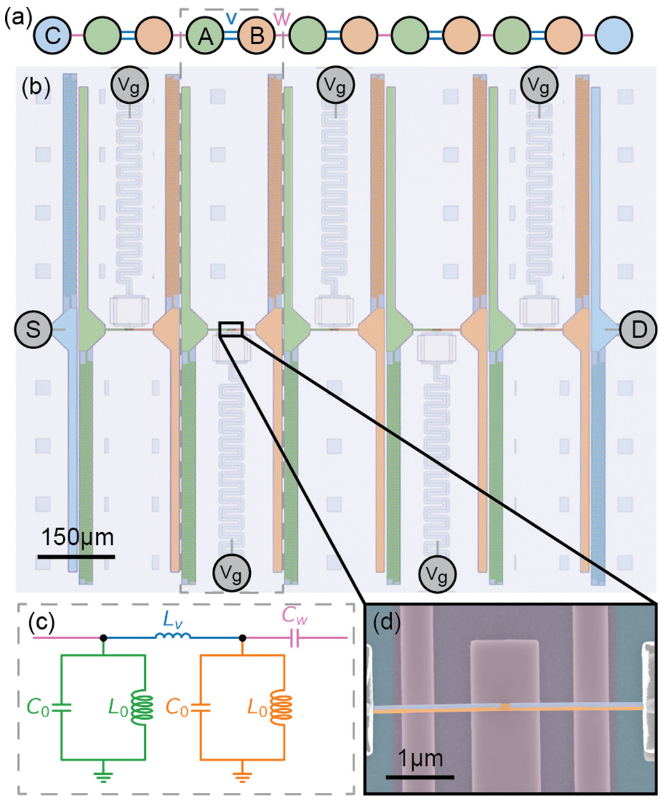Qubit
research
Next generation of qubits for quantum computing
The number one quantum computing challenge is that qubits (the basic units in quantum computers) are extremely fragile. Qubits are easily influenced by many things, like light and temperature. Quantum decoherence is what happens as a quantum system gradually loses its special quantum behaviour over time.
To overcome this challenge, we study new types of qubits that are by design protected from outside influences. These new qubits are referred to as ‘protected qubits’ and have the potential to outperform established technologies. We aim to understand, develop, and demonstrate protected qubits. In our efforts we combine material science, quantum theory, and novel device design.

New avenues for Majorana qubits
Long-term goal:
To develop a platform for topologically protected qubits with long coherence times and fault-tolerant quantum operations.
Highlights
We continued our approach of implementing Majorana bound states in chains of quantum dots and were able to implement chains which were three dots long, both in nanowire devices and devices in a two-dimensional electron gas. There, we showed that the protection of Majorana states increased for three dot chains compared to two-dot chains (Nature Nanotechnology).
In addition, we demonstrated that Majorana states were localised at the chain ends only, and that they could be moved between sites by an external gate (Nature). Moreover, in a joint theoretical and experimental work, we developed automatic procedures to tune up the quantum dot chains to a Majorana regime (arXiv).
On the theoretical side, we developed a protocol to scale up a quantum dot chain beyond three dots, using only electrostatic gates (Phys. Rev. Research). We also showed how to tune quantum dot chains using an external flux (SciPost Phys. Core). In addition, we showed how to detect and avoid false positives mimicking Majorana states (arXiv).

Novel superconducting and hybrid qubit architectures
Long-term goal:
To develop new qubits based on superconducting circuits with intrinsic protection against noise and with gate fidelities outperforming conventional qubit architectures.
Highlights
We proposed an architecture for all-to-all connectivity between Andreev spin qubits using gate-tunable couplers, enabling selective interactions in a scalable superconducting spin qubit processor (PRX Quantum).
Also using a hybrid platform, we experimentally implemented a gate-tunable Su-Schrieffer-Heeger chain and demonstrated a topological phase transition by controlling nanowire-based inductive couplings (Phys. Rev.).
To support the design of complex superconducting devices, we extended the energy participation ratio method to highly anharmonic circuits, achieving accurate modelling of fluxonium qubits (arXiv).
Finally, we experimentally demonstrated a dynamic flux-pulse-assisted readout protocol (arXiv), improving both the speed and fidelity of fluxonium measurements without relying on quantum-limited amplifiers.
We have expanded protected qubit efforts, to work with the Group IV semiconductor Germanium, which provided compatibility with industrial fabrication, as well as a nuclear spin-free environment for spin-based qubits. We showed that using a novel annealing technique developed at QuTech, we could proximitise a Ge quantum dot in a quantum well, with a transparent interface to a PtSiGe superconductor (Nature Materials).
Qubit devices of the future will likely be complex, with many tuning and control knobs, and we demonstrated techniques for the automated operation of such circuits (Phys. Rev. Applied, arXiv).

Top and bottom-right: Electron microscope images of our latest Majorana devices created with either hybrid semiconducting-superconducting nanowires (top) or 2DEGs (bottom-right). Arrays of metallic gates (colored in pink/purple) are used to create three quantum dots (highlighted with black dashed circles in the bottom-right image). Such quantum dots are coupled by thin aluminum strips, creating the conditions to host Majorana bound states.
Bottom-left: The square chip hosts one of the measured devices; the bottom rectangular chip contains electrical resonators which enable fast measurements.

Picture showing a topological metamaterial design using superconducting resonators and semiconductor nanowires. In (a) and (c), we see an overview of the idea and in (b) and (d) we see a real picture of the device. In particular, in (d) we are zooming in on the semiconductor nanowire partly covered with a thin superconductor. By changing the voltage under the nanowire, the device can be tuned into a topological regime.
